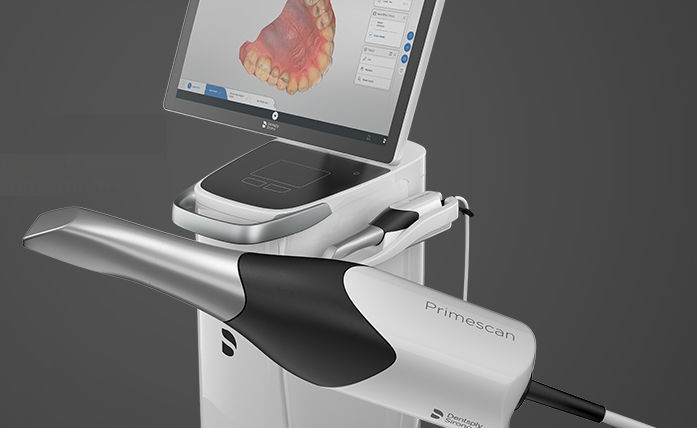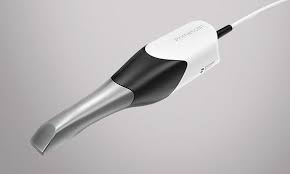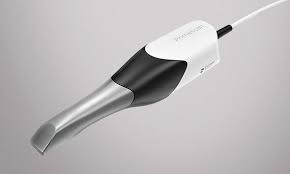In the realm of modern dentistry, technology continues to revolutionize the way oral health professionals diagnose, treat, and monitor patients. One such innovation making waves in the dental world is the digital intraoral scanner. This groundbreaking tool offers a myriad of benefits, from precise imaging to enhanced patient comfort. Let’s delve into the world of...
Latest News
Distinctively re-engineer revolutionary meta-services, change management and premium architectures. Intrinsically incubate intuitive opportunities and real-time potentialities.


In the realm of modern dentistry, technology continues to revolutionize the way oral health professionals diagnose, treat, and monitor patients. One such innovation making waves in the dental world is the digital intraoral scanner. This groundbreaking tool offers a myriad of benefits, from precise imaging to enhanced patient comfort. Let’s delve into the world of digital intraoral scanners to understand their significance and impact on dental care.
1. Introduction
Digital intraoral scanners are cutting-edge devices designed to capture detailed images of the inside of a patient’s mouth. These scanners utilize advanced optical technology to create accurate 3D representations of teeth, gums, and oral structures. Unlike traditional dental impressions that involve messy materials and discomfort, digital scanners offer a streamlined and efficient alternative.
What is a Digital Intraoral Scanner?
A digital intraoral scanner is a handheld device equipped with a small wand-like camera. This camera captures high-resolution images of the patient’s oral cavity, which are then processed by specialized software to create precise 3D models. These models can be used for a variety of dental applications, including creating crowns, bridges, aligners, and implants.

Advantages of Digital Intraoral Scanners
Precision and Accuracy
One of the primary advantages of digital intraoral scanners is their exceptional precision. The detailed 3D images they produce allow dentists to design customized restorations with unparalleled accuracy. This precision ensures a better fit for dental prosthetics, reducing the need for adjustments and improving patient outcomes.
Time Efficiency
Traditional dental impressions can be time-consuming and inconvenient for both patients and practitioners. Digital intraoral scanners streamline the process significantly, reducing chair time and expediting treatment planning. With quick and efficient scanning capabilities, dentists can provide prompt care without compromising accuracy.
Patient Comfort
Gone are the days of uncomfortable, gooey impression materials. Digital intraoral scanners offer a comfortable and non-invasive experience for patients. The scanning process is quick, painless, and eliminates the need for repetitive impressions. Patients appreciate the convenience and ease of digital scanning, making their dental visits more pleasant.

How Digital Intraoral Scanners Work
Optical Technology
Digital intraoral scanners utilize advanced optical technology, such as structured light or confocal microscopy, to capture detailed images of the oral cavity. The scanner’s camera rapidly captures multiple images, which are then stitched together to create a comprehensive 3D model.
Image Processing
Once the images are captured, sophisticated software processes the data to generate a digital impression. Dentists can manipulate this virtual model to plan treatments, design restorations, and simulate outcomes before any physical work begins. This digital workflow enhances communication between dental professionals and laboratories, ensuring precise results.
Applications of Digital Intraoral Scanners
Dentistry
In general dentistry, digital intraoral scanners are used for routine examinations, diagnosis of dental caries, and monitoring oral health. Dentists can easily track changes in a patient’s teeth and gums over time, allowing for early intervention when necessary.
Orthodontics
Orthodontists benefit greatly from digital intraoral scanners when planning and executing orthodontic treatments. These scanners are used to create accurate impressions for clear aligners, braces, and retainers, improving the efficiency and effectiveness of orthodontic care.
Prosthodontics
In prosthodontics, digital intraoral scanners play a crucial role in designing and fabricating dental prosthetics. Crowns, bridges, dentures, and implants can all be created using digital impressions, ensuring a precise fit and natural appearance for patients.
Future Trends in Digital Intraoral Scanners
Artificial Intelligence Integration
The integration of artificial intelligence (AI) is poised to revolutionize digital intraoral scanning. AI algorithms can analyze images in real-time, aiding dentists in detecting issues such as caries, cracks, and anomalies with greater accuracy. This technology promises to enhance diagnostic capabilities and treatment outcomes.
Enhanced Portability
As technology advances, digital intraoral scanners are becoming more compact and portable. Handheld devices with wireless capabilities allow for greater flexibility and convenience in clinical settings. Dentists can easily transport scanners between operatories or even use them in mobile dental units.
Conclusion
In conclusion, digital intraoral scanners represent a significant advancement in modern dentistry. Their ability to capture precise 3D images quickly and comfortably has transformed the way dental professionals approach diagnosis, treatment planning, and restoration design. With benefits such as increased accuracy, time efficiency, and patient comfort, these scanners are shaping the future of oral healthcare.
FAQs
What is the cost range for digital intraoral scanners?
The cost of digital intraoral scanners can vary widely depending on the brand, features, and software included. Prices typically range from $15,000 to $50,000 or more.
Can digital intraoral scanners be used for pediatric dentistry?
Yes, digital intraoral scanners are suitable for use in pediatric dentistry. They offer a non-invasive and child-friendly alternative to traditional impressions, making the experience more comfortable for young patients.
Do digital intraoral scanners replace traditional dental impressions?
While digital intraoral scanners offer numerous benefits, they do not completely replace traditional dental impressions.

